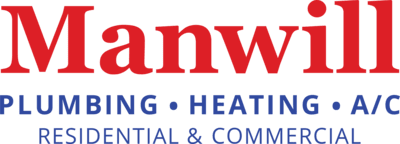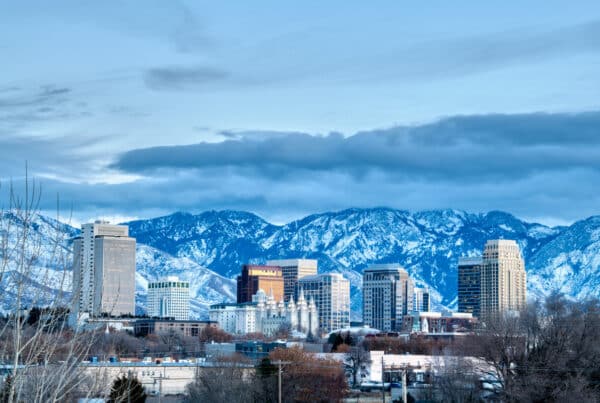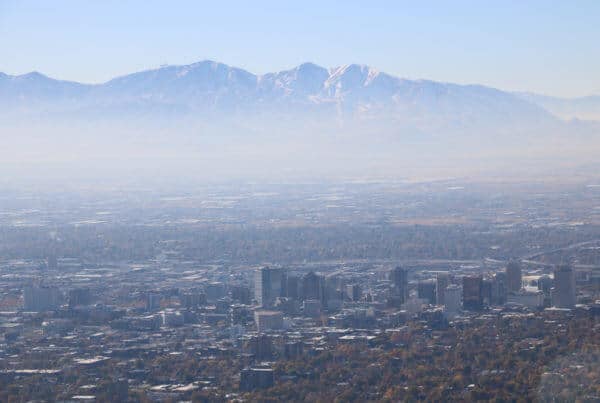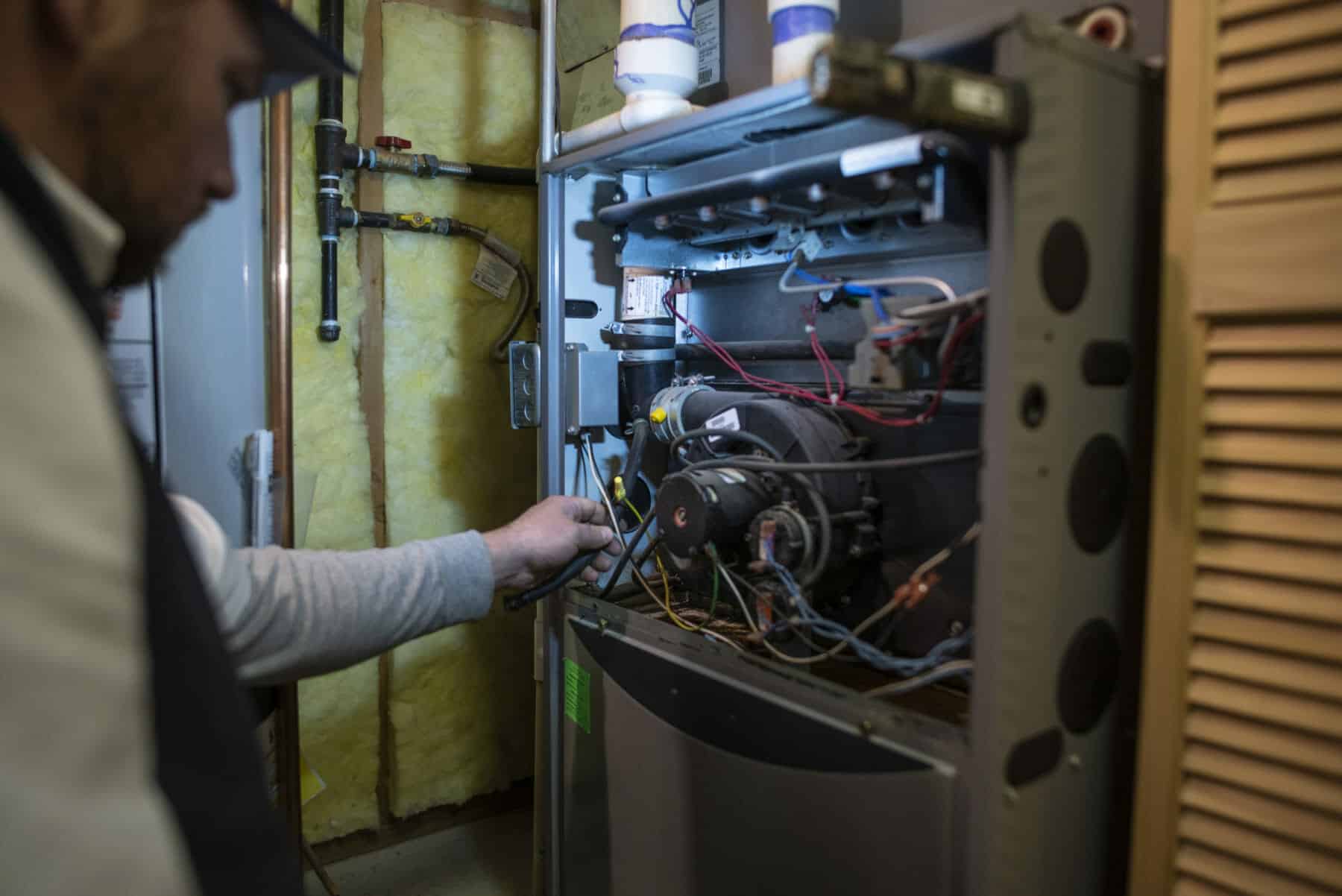
Common Furnace Problems and How to Fix Them
Temperatures are dropping, and homeowners throughout Utah are bumping up the thermostat. Turning on the heat and running the furnace can, unfortunately, uncover problems you didn’t realize were there before. If your furnace isn’t working, don’t panic. You may be able to fix it rather than replace it. Choosing to repair a broken furnace is much more economical than buying a new one. On average, the cost of a new furnace ranges from $2,700 – $6,800, depending on several factors, while furnace repairs are often just a few hundred dollars.
Now that winter storms are in the forecast, it is essential you get your furnace up and running correctly, so you don’t have significant issues during the season. Nothing is worse than a furnace that breaks down in the middle of a snowstorm. Luckily, our Manwill team of furnace technicians have put together a list of the most common furnace problems, their causes and some DIY or technical solutions. To stay ahead of problems, we also explain the benefits of routine furnace tune-ups and what you can expect with each service appointment.
The Most Common Furnace Problems
Home furnaces are tricky. These large appliances tasked with the job of warming your home must take in cold air, clean and heat it, and then distribute it throughout the entirety of your home. While heating problems vary, there are a few that come up time and time again. According to our home furnace experts, the most common furnace problems homeowners experience include:
- Furnace is sporadic, on and off cycling
- No air movement through furnace vents
- Cold and hot spots throughout the home
- Inefficiency that causes rising energy bills
- Loud noises from your furnace
- A continuously running furnace fan or blower
Our Manwill technicians see these problems frequently, and they happen for a number of reasons. If any of these issues sound familiar, keep reading to discover what could be the culprit behind your frustrating furnace.
What’s Causing Your Furnace Problem?
When your furnace is lacking the capability to heat your home, it is a clear sign that something is wrong. However, finding the root of the problem is a bit trickier. Here are some common causes of furnace problems.
A Dirty Furnace Air Filter
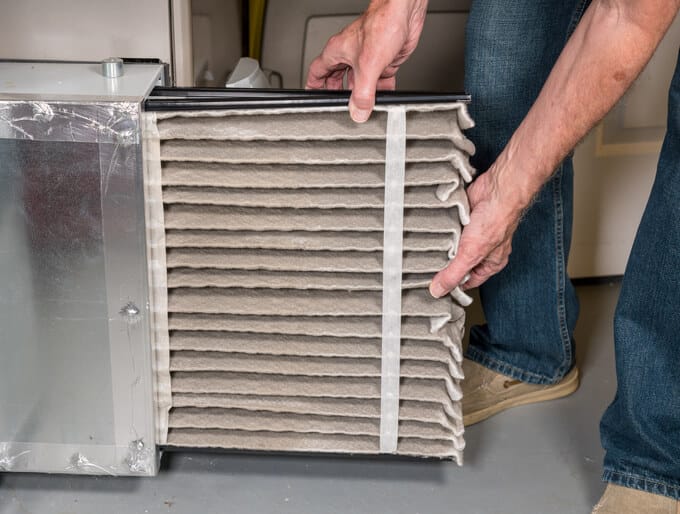
In some instances, this strain can actually cause your heating system to overheat and shut off. This results in only cold air moving through your home. When this happens, change out the filter and let your system cool off for a couple of hours before turning your furnace back on. (If you still have only cold hair blowing, it may be time to call a Salt Lake furnace repair technician.)
Luckily, learning how to replace a furnace air filter is relatively straightforward. Depending on the type of filter you have, you may get anywhere from one to three months out of the filter. Or, as part of our furnace tune-up services, we will replace your filter throughout the year for greater efficiency.
A Malfunctioning Thermostat

- The furnace produces no heat
- A blank display
- Severe temperature swings
- Sporadic cycling on and off
- Issues with your HVAC fan
First things first: check that your thermostat switch is set to “heat,” (sometimes this can get knocked). If your furnace is continuously running, check the fan settings; if it is switched to “on,” switching this back to “auto” should stop the constant fan cycle. If this doesn’t work, there could be a problem with the fan limit switch which will require heating repair services to repair or replace the switch. Sometimes you can simply replace the thermostat battery, and that fixes the problem. However, it can also be more complicated than that. It is important that you match the type, capability, and features of your equipment to your thermostat.
If you have the wrong thermostat or a faulty one, your heating system is most likely having issues. Contact one of our HVAC technicians to see if your thermostat could be contributing to your furnace issues. We also may be able to make a suggestion for a new thermostat that may better match your home and lifestyle.
Tripped Circuit Breaker
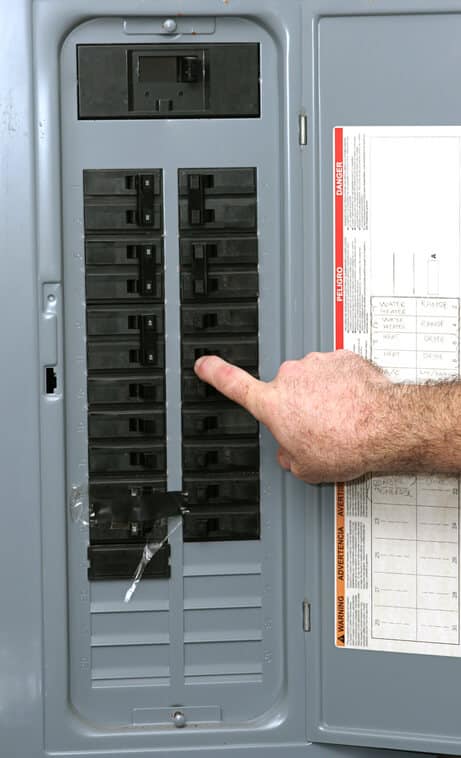
Some homeowners, typically in older homes, experience frequent circuit breaker trips. When a circuit breaker trips, this means that the electricity is cut off to keep your circuit from overheating or causing more damage. Even though the circuit breaker trips ensure safety, it can be frustrating when they happen time and time again. If this is happening to you, it could signify a few things, including:
- Circuit Overloads
- Short Circuits
- Ground Fault Surges
Making sure the circuit breaker is “ON” is a good place to start if your furnace is not turning on. However, if a circuit breaker continues to trip when the furnace is running, you should contact an electrician for a safe, long-term electrical solution.
Faulty Pilot Light
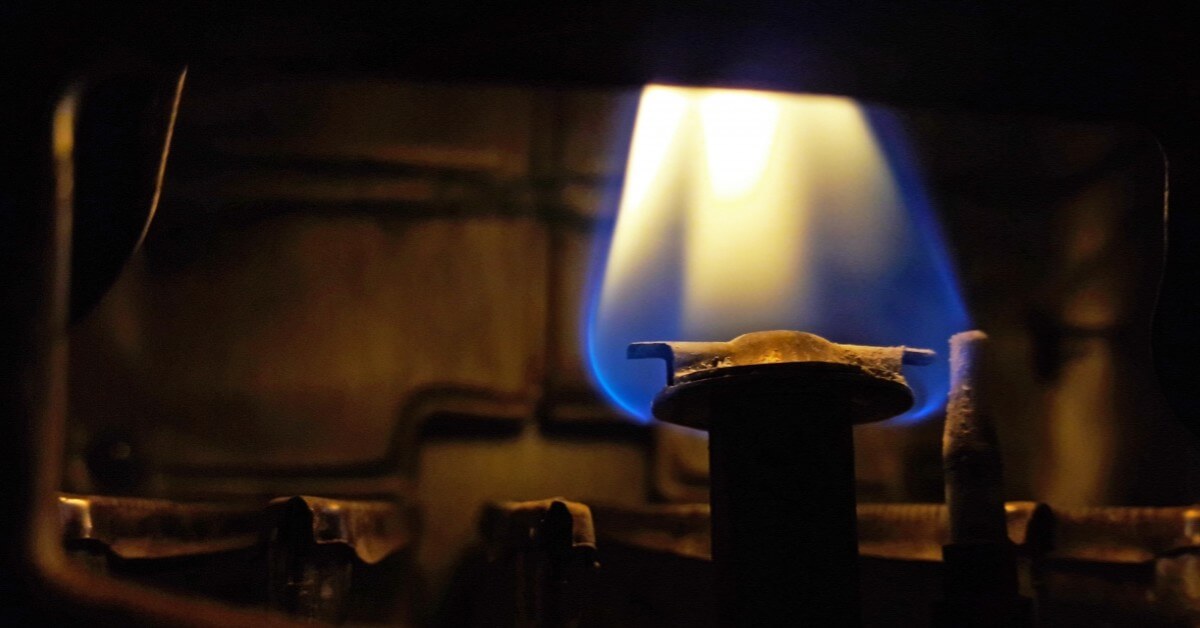
A non-functioning furnace pilot light is best left to a trained HVAC professional because fixing it often involves turning off or inspecting your natural gas supply. Natural gas can be dangerous to tamper with because when done incorrectly, it can lead to highly flammable gas leaking into your home. When the pilot light goes out on your gas furnace, it may have to do with your home’s gas supply lines or the gas regulator or thermocouple within the furnace.
At Manwill, we can safely inspect, clean, and repair the source of your faulty pilot light’s problem to keep your heat running.
Other Furnace Issues
If loud, banging noises alert you that something is wrong, it could be a screw, nut, bolt or piece of equipment that has come loose inside your vents. Or, a dirty filter or filter placed the wrong way can also cause noises — usually when you turn the system on and off.
Believe it or not, dusty, dirty coils and other mechanisms in your furnace can also cause significant problems. The build-up of dust can make your heating system work overtime and result in higher energy bills month after month.
Emergency Furnace Problem? Call in the Experts
While this list is a good reference for causes of furnace problems, these complicated appliances can face more complex issues that only a trained HVAC technician can detect. It is best to have a heating expert out whenever your propane, oil, electric, or gas furnace has problems. Or, rather than wait for a problem to arise, you can schedule routine furnace tune-ups to be proactive about your home’s heating.
Call Manwill to schedule furnace tune-up appointments in Draper, Midvale, Millcreek, Murray, Sandy, and throughout Salt Lake and the surrounding area.
The Benefits of Routine Furnace Tune-Ups
A knowledgeable HVAC pro can spot furnace problems early on, saving you money and preventing chilly nights at home. And while a furnace problem is a good reason to call out the pros, there are several other advantages of furnace tune-ups and inspections, including:
- When you maintain your furnace, it works more efficiently, eliminating waste of energy and reducing your monthly heating costs.
- Regular furnace tune-ups from a licensed HVAC technician can prolong the life of your heating system (and minimize the risk of irreversible damage to your heating system) to ensure that you sustain critical components.
- Your HVAC expert will detect and fix any minor issues uncovered during your furnace tune-up service. They will also address any severe problems that include heating system repairs or replacement.
- Routine maintenance prevents house fires and other dangers such as unhealthy gas fumes or even deadly carbon monoxide leaks.
What to Expect From a Furnace Tune-Up
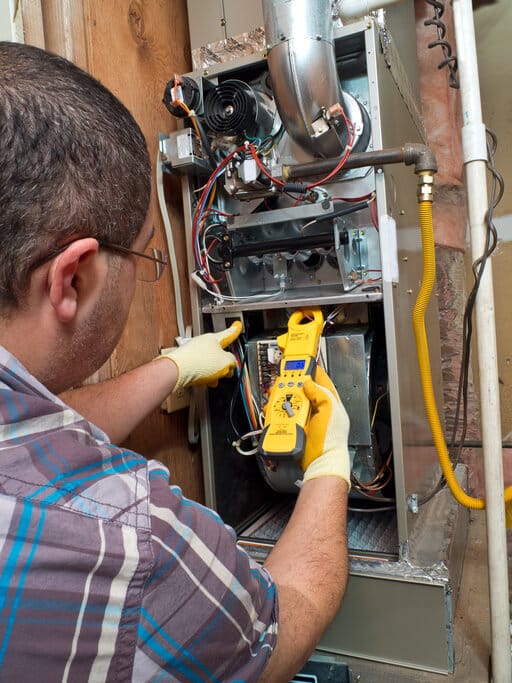
When one of our Manwill technicians comes to your home or business for a furnace tune-up service, you can expect them to run through an inspection checklist. However, the services performed during the furnace inspection may vary, depending on your heating system and what comes up during the service.
Although the needs of your furnace tune-up will vary, here is a list of basic things you can expect the technician to do:
- Examine the heat exchanger for signs of corrosion and cracks or separations.
- Check the blower and clean its components, including removing the blower wheel and any debris or blockages.
- Test the seal on the blower access door.
- Check the air intake grills for any blockages.
- Perform an amp-draw test on the blower motor and compare the results to the unit’s listed specifications.
- Check the burner for proper ignition and testing the flame sensor for accurate operation.
- Lubricate all the motor’s moving parts to reduce friction. When there’s friction, the motor has to work harder, which requires more electricity, and it could also result in a premature failure.
- Check all electrical connections and examine the wiring for signs of rust and corrosion.
- Test the thermostat calibration.
- Examine the flue for proper operation.
- Test the furnace’s safety controls.
- Check the belts (if your furnace has one) for signs of wear or cracks.
- Test that the system’s startup cycle is functioning correctly.
- Check the furnace’s air filter.
Taking Care of Your Furnace Between Tune-Ups
In between professional furnace tune-ups, follow these tips to keep your furnace running strong.
- Keep your blower motor bearings lubricated throughout the season. If your heating system uses oil cups, you should add about 3 drops of oil per year to ensure lubrication. (However, a lot of new motors have permanently sealed bearings and do not need oiling.)
- Check your blower unit regularly and free it of any dirt. You can do this by vacuuming the furnace periodically. When you do this, make sure you shut off the circuit breaker beforehand.
- Along with cleaning your furnace, you can also test any exposed ductwork joints for air leaks. One technique for doing so includes holding up a lit stick of incense to the joints while the furnace is running. The smoke should lead you to the source of any leaks. When you find them, seal up the areas using metal tape.
- Another step you can take is checking your thermostat’s accuracy. Put an outdoor thermometer on the wall next to the thermostat. Run the furnace for several minutes, and then compare the thermometer’s reading to the displayed room temperature. If you notice any discrepancies, schedule an appointment with our licensed HVAC technicians or let your technician know at your next tune-up appointment.
Choose Manwill for Your Furnace Tune-Ups in Utah
Manwill offers furnace tune-ups throughout Draper and other Utah locations. Along with our scheduled heating services, we also offer planned service agreements. If you only have a furnace in your home we can set up an annual visit to inspect and service your furnace. However, some customers prefer two visits (spring and fall) for both their furnace and air conditioner, while others prefer four visits for commercial accounts (spring, fall, with mid-winter and mid-summer filter changes). Our HVAC system experts at Manwill will design a plan for whatever you need.
Contact Manwill to schedule your furnace tune-up for your home or business today.
